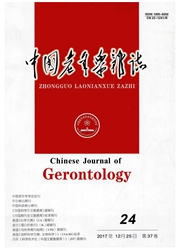

 中文摘要:
中文摘要:
目的探讨腺病毒穿梭质粒介导的碱性成纤维细胞生长因子(bFGF)基因质粒在大鼠缺血心肌中的表达情况及其对缺血心肌血管新生、梗死面积的影响。方法42只健康SD大鼠接受冠状动脉左前降支结扎术,存活30只,随后随机分为治疗组(n=15)和对照组(n=15),治疗组于心肌梗死区和正常区交界处局部注射100μlbFGF基因(1μg/μl),对照组以等体积生理盐水处理。4w后观察红色荧光蛋白(RFP)和bFGF表达情况。微血管计数和氯化三苯四氮唑(TTC)分别检测血管新生情况和梗死面积。结果①基因转染后4w的心肌冰冻切片中均可见RFP表达;治疗组心肌组织bFGF mRNA表达水平较对照组明显增高〔1.238±0.323vs0.771±0.102(P〈0.05)〕,仅在治疗组检测到bFGF蛋白表达。②治疗组微血管密度明显高于对照组〔141.13±17.65vs75.58±6.59/视野(P〈0.05)〕;治疗组梗死面积小于对照组〔16.32±0.43vs17.00±0.57%(P〈0.05)〕。结论重组bFGF裸质粒经心肌内直接注射后能有效表达并发挥促进梗死后心肌血管新生和缩小梗死面积的作用。
 英文摘要:
英文摘要:
Objective To investigate the expression of basic fibrolast growth factor (bFGF) cDNA mediated by adenovirus shuttle plasmid in ischemic myocardium and observe the impact on angiogenesis and myocardial infarct area. Methods The anterior descending coronary artery was ligated to make acute myocardial infarction models. 42 health SD rats accepted operation and 30 rats survived. The survival rats were divided into control group ( n = 15 ) and treatment group ( n = 15 ) randomly. A volume of 100 μl ( 1 μg/μl) pAdTrace-bFGF or physiological saline was injected directly into the junctional zone. After 4 weeks, the expression of RFP was detected by fluorescence mi- croscope. The expression of bFGF gene was evaluated by RT-PCR and western blot. Myocadia] capillary counts were calculated to evaluated the proangiogenc effect. Slices of the LV were stained with triphenyhetrazolium chloride to delineate myocardial infarct area. Results After 4 weeks, all animals with gene therapy can detect the expression of RFP. The expression level of bFGF mRNA was higher in the treatment group (1. 238 ± 0. 323 vs 0. 771 ± 0. 102, P 〈 0. 05 ), the expression of bFGF protein could detected only in the treatment group. Compared to the control group, the capillary density was higher in the treatment group ( 141.13 ± 17.65 vs 75.58 ± 6. 59, P 〈 0.05 ). The myocardial infarction area of the treatment group was smaller than the control group [ ( 16. 32 ±0. 43)% vs ( 17. 00±0. 57)%, P 〈0. 05). Conclusions bFGF gene mediated by adenovlrus shuttle plasmid can be efficiently transferred into rat ischemic heart and then stimulate angiogenesis and minimize myocardial infarct area.
 同期刊论文项目
同期刊论文项目
 同项目期刊论文
同项目期刊论文
 期刊信息
期刊信息
